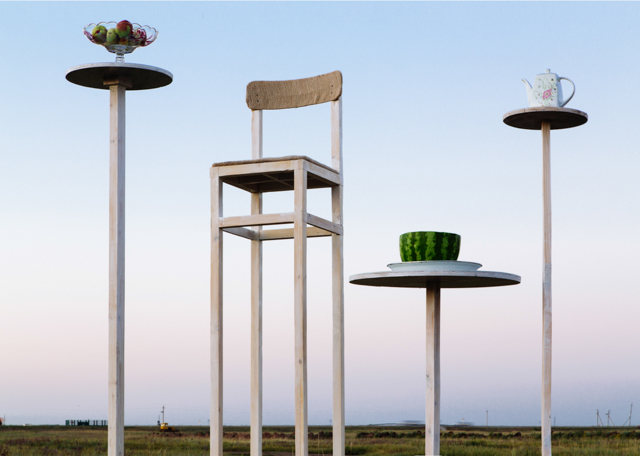“It’s a huge antiseptic pill, also used as an antimicrobial and anti-moth remedy. I remember its peculiar smell from the very childhood.” The solo exhibition called “Naphthalene” by Askhat Akhmediyarov opens in the Has Sanat metropolitan art gallery. It’s the first one in twenty years.”
“… My grandma had a huge old dower chest, where she used to keep precious cloths, accurately folded, Koran falling apart, a combat saber, medals, gifts; old photographs were also treasured there. All of these I remember along with the penetrating smell of naphthalene…”
Askhat Akhmediyarov is one of the brightest representatives of the modern Kazakhstani art. He participated in Berlin festival ‘No Mad’s Land’, Singapore biennale ‘If The World Changes’ in 2013, Art Dubai in 2014. Akhmediyarov works in several genres: video art, performance, installation, and photography. Works of different series and periods will be displayed at the exhibition.
“During the slashing 90’s, after passing of grandmother, the contents of the dower chest started fading away, sometime after, the chest itself disappeared. Everything, that was kept safe by naphthalene and a woman’s care, was taken away by her numerous successors and the necessity, forced by time…”
One of the main topics for Akhmediyarov, the one that he cares about, is an investigation of the influence of the Western culture on the national one, of its expansion. He outlined this topic in the very personal story of his grandmother’s dower chest. Just like things from the chest, given away, sold out, unnecessary, the attributes of the past are not strong enough to resist time and changes in the minds of people. According to the artist’s confession, in ‘Naphthalene’ with the ‘quiet horror’ he witnesses the loss of traditions and this loss starts coming up in the archival photographs of the late XIX - early XX century. In this case the “anti-moth” remedy is useless.
“The photographs were taken by all who had the basic code, similar to that of our grandmother. Cloths and gifts had lost their value, and therefore were thrown away. Her daughter had sold part of grandfather’s medals, for their precious metals, while our heirloom – the saber – was sold off for 80 Soviet roubles, to get some money for food and booze…”
‘Naphthalene’ does not guarantee conservation of the steppe’s material culture. However, it gives us an opportunity to meditate on the interpenetration of the East and the West.
